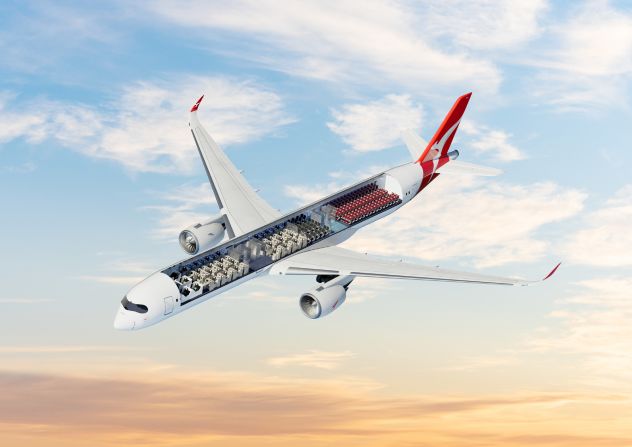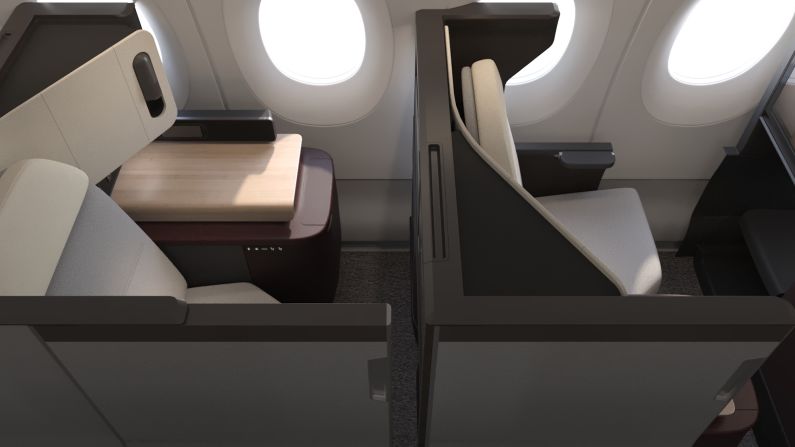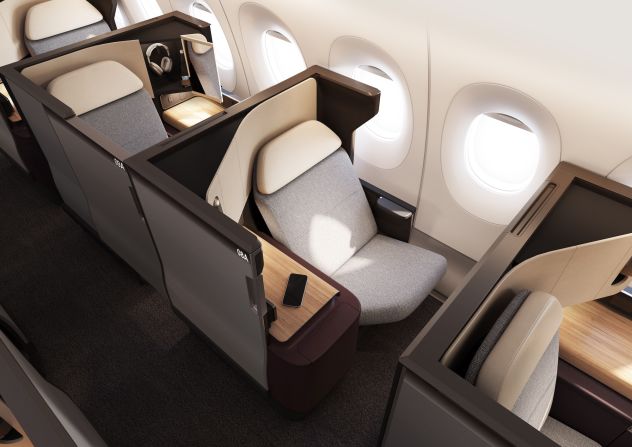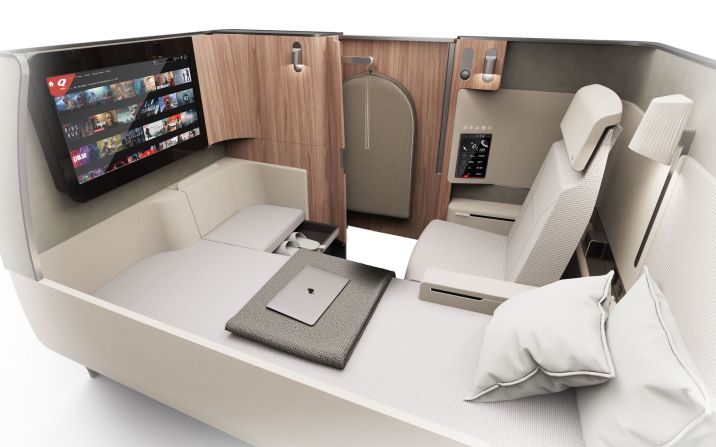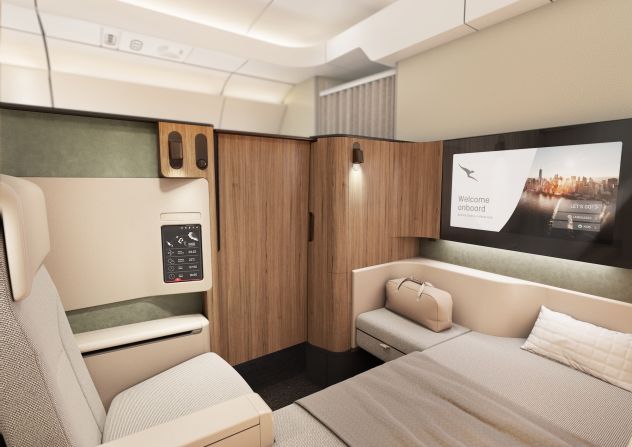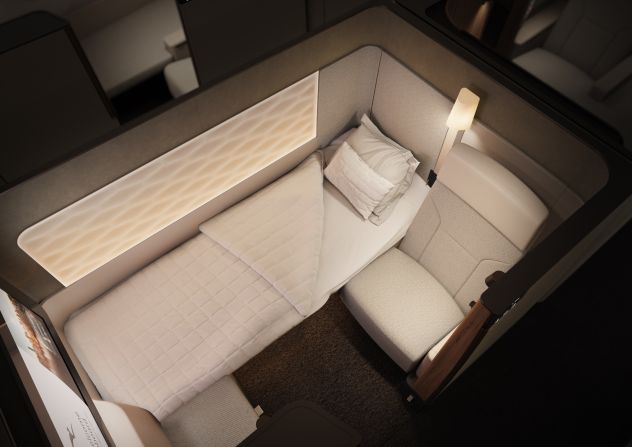Editor’s Note: Sign up for Unlocking the World, CNN Travel’s weekly newsletter. Get news about destinations opening, inspiration for future adventures, plus the latest in aviation, food and drink, where to stay and other travel developments.
As Qantas gears up for the 2025 launch of its ultra long-haul “Project Sunrise” flights, the airline is offering a sneak peek of what passengers in the plane’s front section will experience on the 19-hour record-breaking journeys.
On Thursday, the airline revealed the first and business class cabin prototypes for the 12 Airbus A350s that will service the direct flights connecting Australia with New York and London.
Given the time passengers will spend in the air, enhancing comfort is a priority for the designers.
“Qantas has been the leader in opening up new long-haul flights for most of our history, and we’re bringing everything we’ve learned, both technically and in terms of passenger comfort, to Project Sunrise flying,” Qantas Group CEO Alan Joyce said in a press statement.
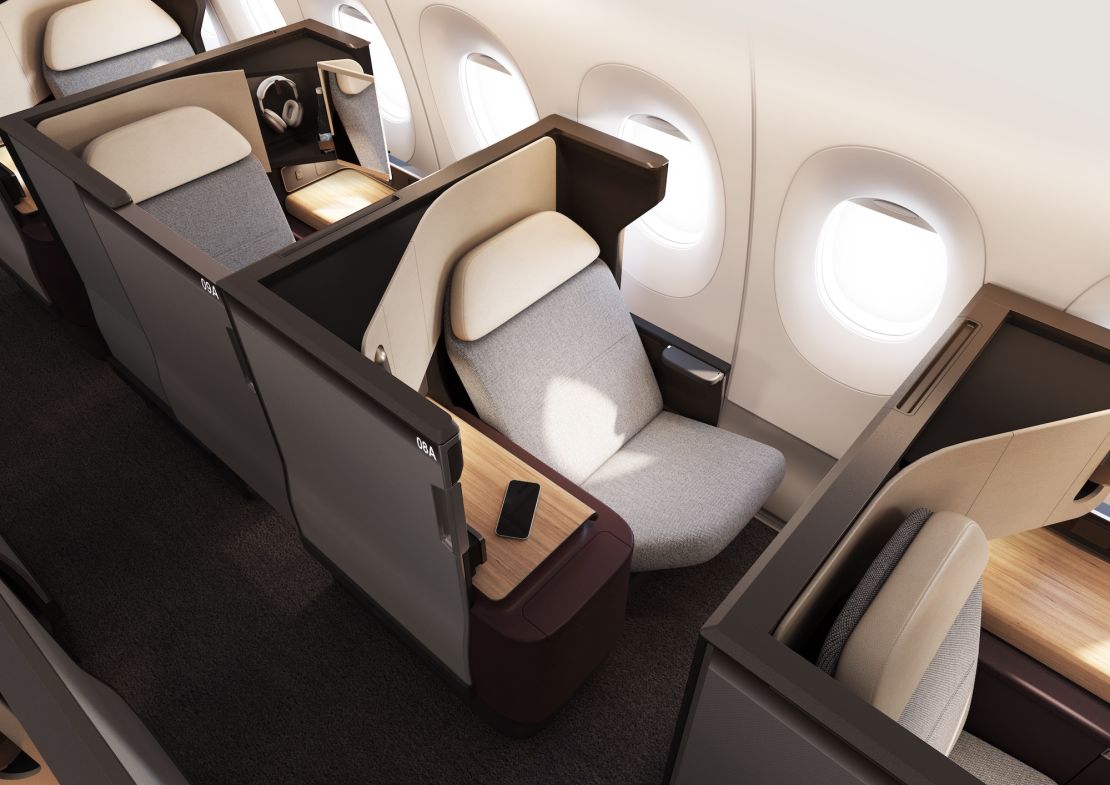
In addition to working with designers and aviation specialists, the airline also enlisted the help of a team of scientists, including sleep researchers, from the University of Sydney’s Charles Perkins Centre.
The Project Sunrise A350s will seat only 238 passengers, a sharp drop from the usual 300-plus seat layout, to provide more space for fliers.
The layout includes six first class seats in a 1-1-1 configuration, 52 business class seats in 1-2-1, 40 premium economy seats in 2-4-2 and 140 economy seats in 3-3-3.
“We think our A350 cabins have the most sophisticated and thoughtful design of any airline, combining cutting-edge technology with sleep research to shape the look and feel for what is effectively a new era of travel,” said Joyce.
First look at Project Sunrise’s first and business cabins
The first class cabin seats, or First Suites, will feature an extra-wide fixed bed, a 22-inch wide recliner lounge chair, a full-length wardrobe, a folding dining table – large enough for two – and a 32-inch ultra-high definition TV.
The airline says customers will “feel like they are in a mini boutique hotel.”
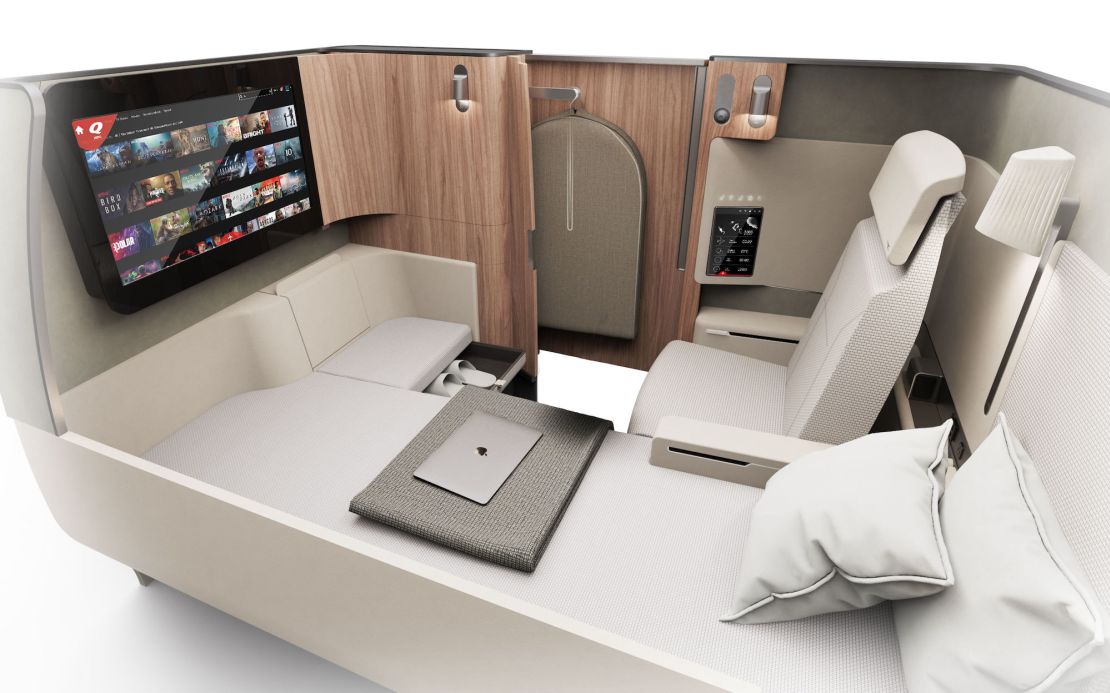
Business class suites will be 42 inches wide with 25-inch-wide chairs that can be reclined into a two-meter bed. They will also include a cushioned leather ottoman, a large mirror, plenty of storage space and an 18-inch ultra-high definition touchscreen TV.
All Business and First Suites will be enclosed by high walls and have a sliding door for privacy. They will also have multiple charging options for personal devices, including a wireless induction charging dock.
“We began designing this aircraft cabin five years ago, working with Airbus and Qantas to maximize space, as well as creating a tailored lighting program that will influence mood and sleep patterns,” said David Caon, the designer of the cabin, in the statement.
“All the design and service elements will work together to significantly improve inflight comfort, convenience and health and well-being and help minimize the old nemesis of jetlag.”
The premium economy and economy class prototypes have yet to be released, but the airline says all passengers will have access to free high-speed Wi-Fi and Bluetooth connectivity.
That means no more tangled earphone cables, allowing you to connect your Bluetooth headset to the in-flight entertainment system.
The planes will also feature a “Wellbeing Zone” to give passengers a chance to stretch their legs and enjoy refreshments.
Some of the world’s longest flights
The name “Project Sunrise” was inspired by clandestine World War II flights from Perth to Sri Lanka en route to London. They were fraught with danger and lasted so long that they saw two sunrises.
To prepare for the launch of Project Sunrise, Qantas conducted three trial research trips in 2019.
During these flights, pilots wore brainwave monitors and had their urine tested in the weeks before and after the flights to track levels of melatonin, a hormone that controls sleep cycles.
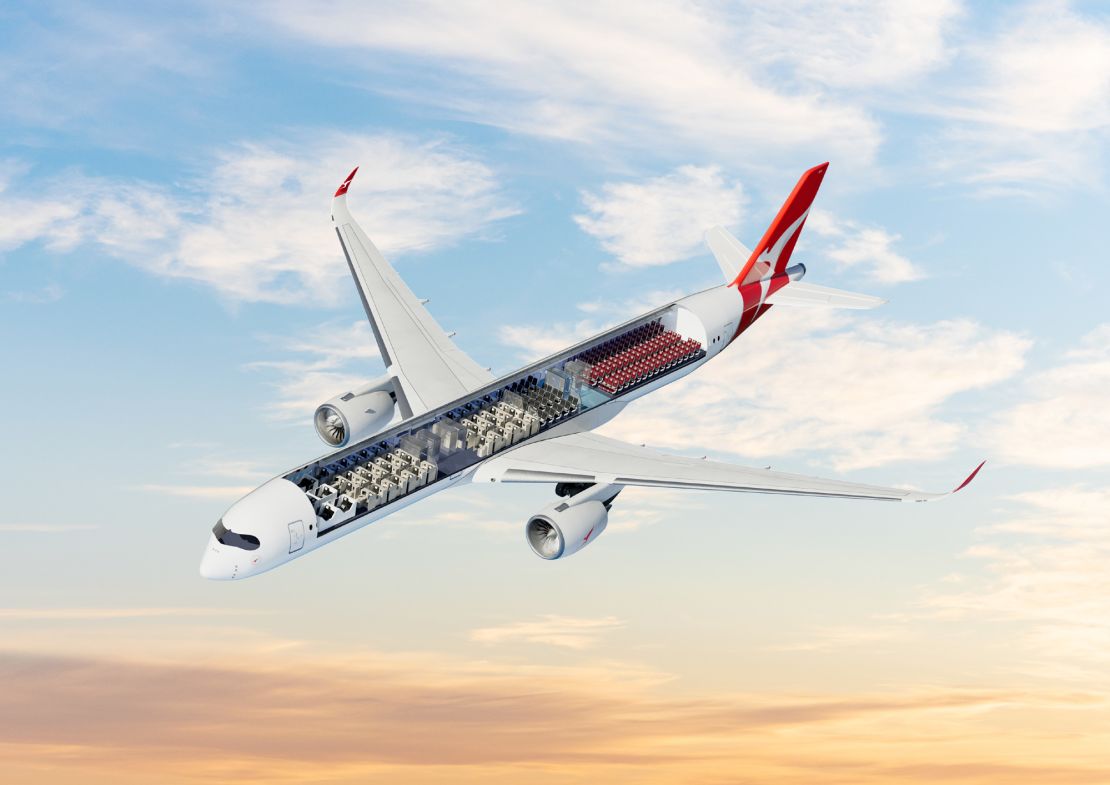
Passengers in the main cabin wore monitoring devices, allowing scientists to study how their “health, well-being and body clock” were impacted by a set of variables including lighting, food and drink, movement, sleep patterns and inflight entertainment.
This data was presented to Australia’s Civil Aviation Safety Authority, which will need to approve the routes based on proof that pilots, cabin crew and passengers can cope with up to 22 hours in the air without a break.
One of the trial flights, Flight QF7879 – which CNN experienced first-hand – became the world’s longest passenger flight by a commercial airline both for distance (17,800 kilometers, or about 11,060 miles) and duration in the air (19 hours and 19 minutes).
Living up to the project’s name, passengers did indeed experience two sunrises.
In terms of the world’s longest scheduled passenger flight currently in service, that honor goes to Singapore Airlines’ Singapore-JFK flight, which covers 9,536.5 miles.
Flights from Singapore to JFK take 18 hours and 5 minutes, while JFK to Singapore takes 18 hours and 40 minutes, due to the headwind.


